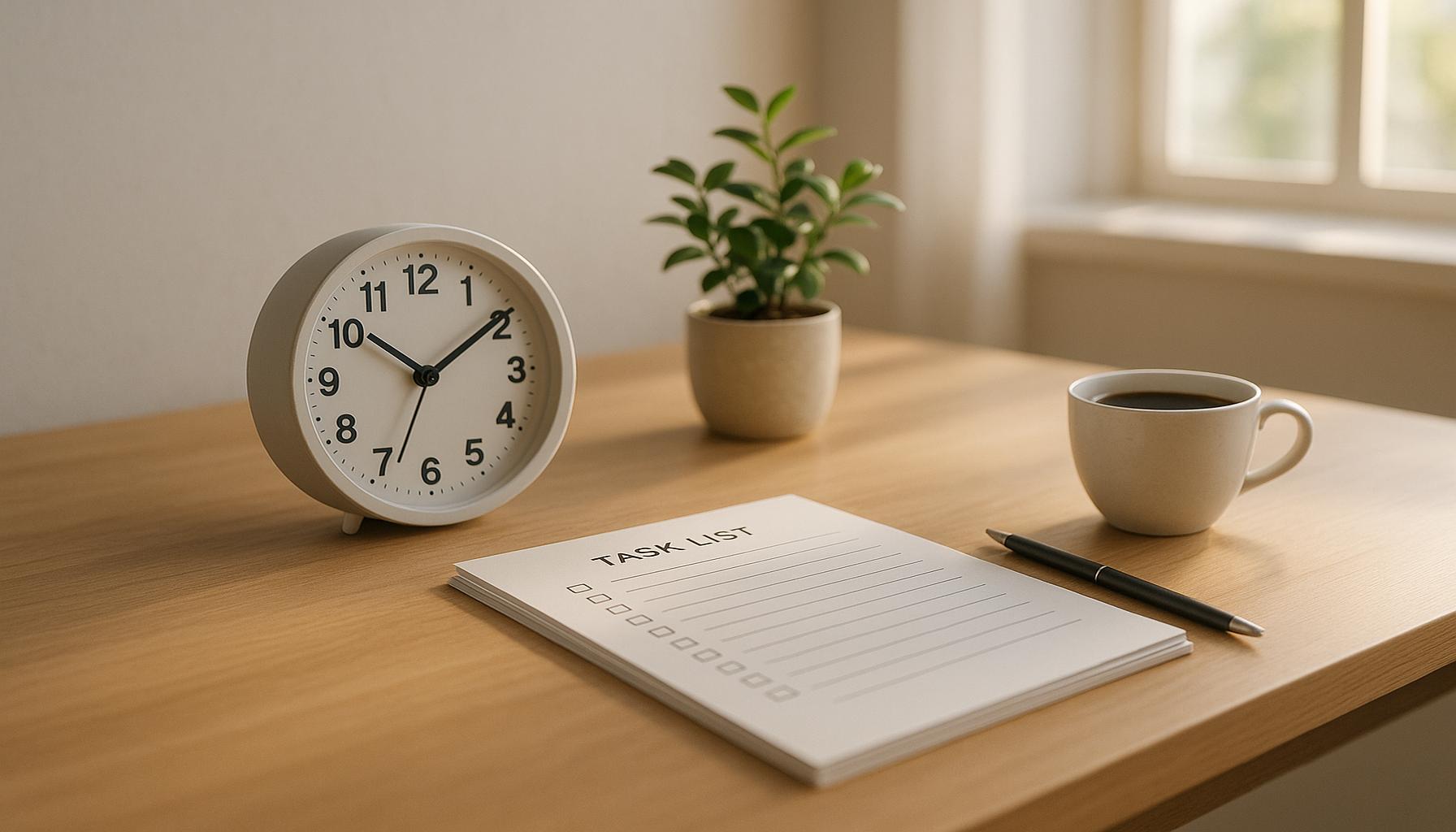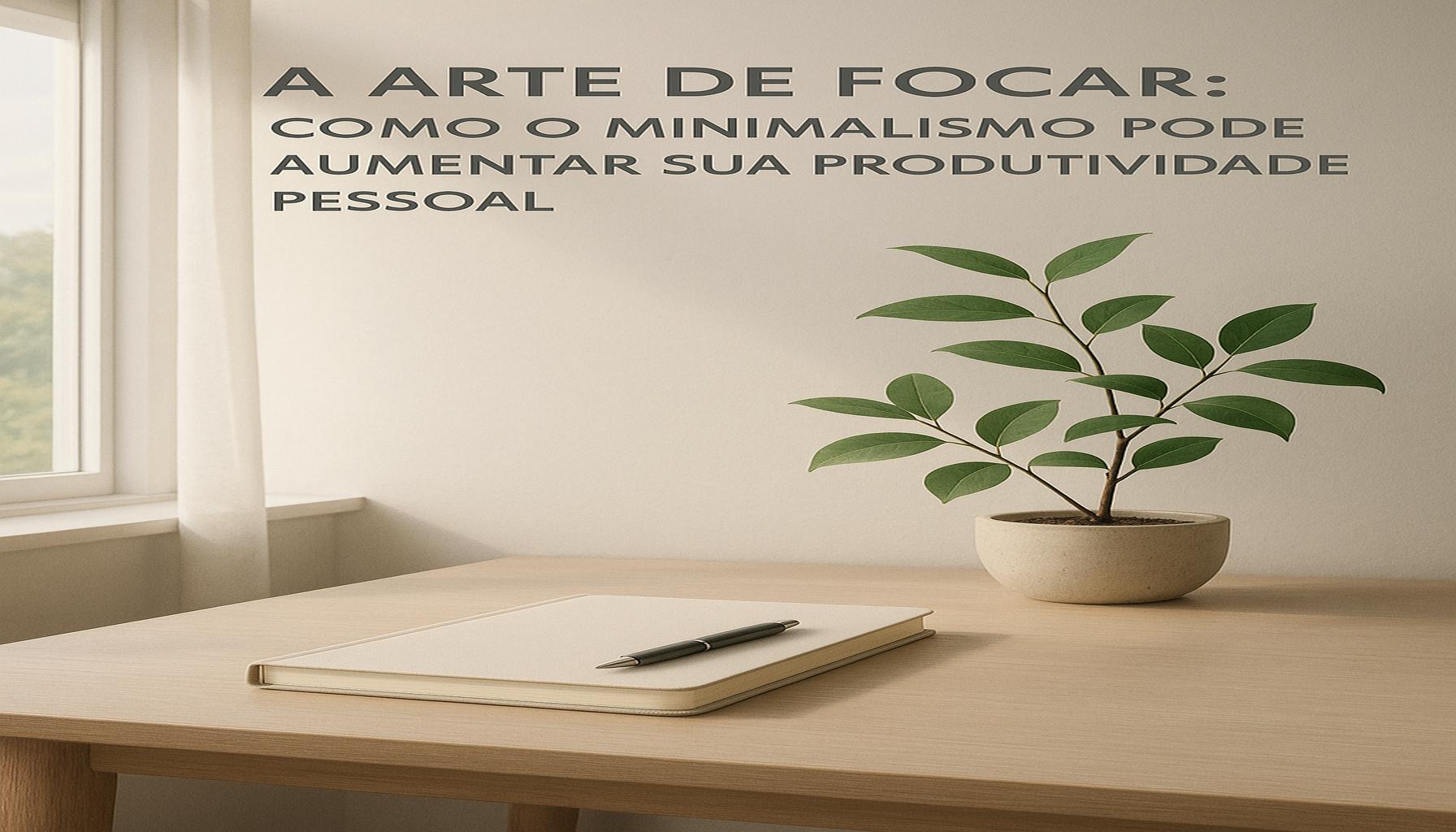Minimalism in Time Management: Techniques for Prioritizing Tasks and Increasing Focus

The Challenges of Overwhelm in Our Modern Lives
In an age characterized by relentless notifications and an ever-growing to-do list, many individuals find themselves juggling numerous responsibilities while battling distractions and inefficiencies. The result is often lost time and unmet goals, leaving people feeling fatigued and stressed. In response, a growing number of individuals are exploring minimalism—not just as a lifestyle choice but as a transformative philosophy that prioritizes simplicity and intentionality, particularly in the realm of time management.
Core Principles of Minimalism in Time Management
Minimalism in time management hinges on several key principles that can significantly enhance productivity:
- Prioritization: This involves identifying what truly matters in both personal and professional spheres. By distinguishing between urgent tasks and those critical for long-term success, individuals can allocate their time more effectively.
- Focus: In a world filled with distractions—from smartphones to social media—enhancing concentration becomes pivotal. By setting boundaries, such as designating “distraction-free” worktimes, individuals can cultivate an environment that promotes deep work.
- Efficiency: Streamlining tasks is essential. This could involve automating repetitive processes, delegating responsibilities, or employing tools that help coordinate efforts seamlessly. Simply put, the goal is to work smarter, not harder.
Transforming Productivity with Minimalism
This minimalist approach encourages individuals to do less yet accomplish more. By eliminating the non-essential, one can focus energy on activities that yield the highest returns. Consider the 80/20 rule, also known as the Pareto Principle, which posits that 80% of outcomes arise from 20% of inputs. This insight can radically shift how individuals prioritize their tasks, prompting them to dedicate time to high-impact projects that drive significant results.
Additionally, techniques like the Pomodoro Technique come into play. This method breaks work into intervals, typically 25 minutes long, followed by a short break. This not only fosters intense focus but also helps prevent burnout, making work sessions more productive. For instance, professionals in fast-paced industries—like marketing or finance—can benefit immensely from this structured approach to maintain high levels of output without sacrificing mental well-being.
As we continue to explore the intersection of minimalism and time management, the following sections will unveil effective strategies that can be seamlessly integrated into daily routines. As you prepare to take control of your schedule, anticipate discovering techniques that resonate with your lifestyle and enhance your focus in remarkable ways. Embracing minimalism may just be the essential shift needed for achieving clarity and purpose in your personal and professional life.
DISCOVER: Click here to unlock the benefits of minimalist organization
Embracing Clarity: Streamlining Your Task List
One of the most significant challenges in effective time management is the overwhelming nature of modern task lists. Studies show that the average American adult engages with nearly 100 notifications a day, leading to a cluttered mental space and diminished focus. By embracing minimalism, individuals can sift through the noise, concentrating on a curated list of essential tasks that align with their personal and professional goals.
Creating a Minimalist Task List
To effectively manage time while reducing clutter, it is beneficial to adopt a minimalist approach to your task list. Start by identifying the top priorities that will drive your day forward. Consider the following steps:
- Identify Your Big Three: Each day, choose three key tasks that you must complete. These should be impactful and align with your long-term objectives. By focusing on only three priorities, you create a manageable work environment.
- Eliminate the Non-Essential: Look at your current to-do list and ask yourself if each task truly matters. By removing tasks that have minimal impact, you will create more space to concentrate on what truly counts.
- Utilize Digital Tools: Consider using digital productivity tools that allow you to categorize and prioritize tasks visually. Applications like Todoist, Trello, or Asana can streamline your workflow and help maintain focus by providing a clear overview of your responsibilities.
Another key technique influenced by minimalist principles is the Two-Minute Rule. Coined by David Allen in his book “Getting Things Done,” this rule suggests that if a task can be completed in under two minutes, do it immediately rather than adding it to your to-do list. This simple method not only clears smaller items from your path but also fosters momentum and a sense of accomplishment, helping you tackle larger projects with a more positive mindset.
The Importance of Time-Blocking
Time-blocking is another effective strategy that aligns seamlessly with minimalist time management. This technique involves breaking your day into structured segments, dedicated to specific tasks or types of work. By allocating time blocks, you set clear boundaries on when to focus and when to step away. As a result, this can enhance both concentration and energy levels.
A practical example would be allocating a solid block of time solely for deep work—like problem-solving or creative brainstorming—while reserving other segments for routine tasks like email checks or administrative duties. By examining how you allocate your time, you can ensure that you are not only effectively prioritizing tasks but are also fostering an environment that promotes increased focus.
As we delve further into minimalism in time management, it is essential to recognize how these techniques can harmonize with your daily routines, ultimately enhancing clarity and productivity. In the upcoming sections, we will explore additional methodologies that support a minimalist approach, allowing you to take control of your time and align your efforts with your most significant goals.
Minimalism in Time Management: Techniques for Prioritizing Tasks and Increasing Focus
Building on the principles of minimalism, adopting effective time management techniques can significantly enhance productivity and focus. These strategies emphasize simplicity, enabling individuals to navigate through an otherwise chaotic array of tasks. The first technique involves task prioritization, where tasks are categorized based on urgency and importance. This method allows individuals to concentrate on high-impact activities, ensuring that the most critical tasks get accomplished first.
Another valuable technique is the Pomodoro Technique. This method involves working for a set period, typically 25 minutes, followed by a short break. This structured time blocks technique helps maintain focus and reduces mental fatigue. By partitioning work into manageable intervals, it encourages sustained concentration without overwhelming the mind.
Additionally, employing a digital decluttering strategy is essential. Minimizing digital distractions—such as reducing the number of open tabs or unsubscribing from unnecessary emails—can lead to increased focus. A clutter-free digital workspace allows for better navigation through tasks, ultimately enhancing overall productivity.
To further amplify focus, practicing mindfulness techniques can be beneficial. Incorporating brief meditation or breathing exercises into your daily routine can help clear the mind, improve attention span, and diminish stress levels. Fostering a mindful approach not only enhances focus but also enriches the overall quality of work.
| Category | Key Features |
|---|---|
| Task Prioritization | Helps focus on critical tasks, avoiding overwhelm. |
| Pomodoro Technique | Enhances focus with structured work intervals. |
| Digital Decluttering | Minimizes distractions, improving navigation. |
| Mindfulness Practice | Enhances attention span and reduces stress. |
Incorporating a minimalistic approach to time management not only streamlines tasks but can lead to greater satisfaction in daily accomplishments. By focusing on prioritization, structured techniques, and mindfulness, one can effectively enhance focus and productivity, paving the way for a more balanced and purposeful work-life integration.
DISCOVER MORE: Click here to enhance your time management
Maximizing Efficiency: The Power of Intentional Breaks
In a world that values constant productivity, it can be tempting to power through tasks without a thought for breaks. However, the minimalist approach to time management emphasizes the importance of taking intentional breaks. Evidence suggests that regular breaks can significantly boost overall productivity and enhance your ability to maintain focus. By integrating short periods of rest into your work routine, you allow your brain to recharge and process information effectively.
The Pomodoro Technique
One of the most recognized methods for incorporating breaks is the Pomodoro Technique, developed by Francesco Cirillo in the late 1980s. This technique is simple yet highly effective: work for 25 minutes, followed by a 5-minute break. After completing four rounds of this cycle, take a longer break of 15 to 30 minutes. By structuring your work this way, you promote sustained attention and maintain a brisk workflow without succumbing to burnout.
Data from productivity studies indicate that individuals who engage in timed work sessions are less prone to distraction and can accomplish more in less time, aligning perfectly with minimalist principles. This method not only helps prioritize tasks but also encourages a dynamic rhythm that can keep your focus sharp throughout the day.
Cultivating Mindfulness During Breaks
Incorporating mindfulness into your breaks can further enhance their effectiveness. Instead of scrolling through your phone or jumping into another task, take a moment to practice deep breathing or enjoy a brief walk outdoors. These activities can stimulate both mental clarity and creativity. According to research published by the American Psychological Association, brief periods of mindfulness can improve focus by reducing anxiety and enhancing cognitive flexibility. As a result, when you return to your tasks, you likely will find a renewed perspective.
Establishing Boundaries: Saying No to Distractions
One of the hallmarks of minimalism is the art of saying no. To optimize your time management, you must establish boundaries that prioritize your work over activities and obligations that may distract you from your goals. The ability to decline non-essential requests is vital in preserving your focus.
Start by assessing events, meetings, or commitments in your life. Ask yourself, “Does this serve my personal or professional objectives?” If the answer is no, practice the courtesy of saying no. Implement strategies for setting limits, such as scheduling specific times for checking emails or social media rather than allowing them to encroach on your productivity.
- Block Unscheduled Meetings: Consider designated times in your calendar for meetings and follow them deliberately. This reduces the scatter of spontaneous interruptions.
- Turn Off Notifications: While technology can enhance productivity, it can also be a source of constant distraction. Limit notifications to only the most critical communications, allowing you to engage with your tasks without frequent interruptions.
- Communicate Your Availability: Be transparent with colleagues and family about your work hours. Clear communication about your unavailability during focused work time can minimize disruptions.
By setting boundaries and saying no to distractions, you not only cultivate a more minimalist approach to your daily tasks but also foster an environment where focus and productivity can thrive.
Incorporating these elements of break management and boundary setting into your time management routines can significantly streamline your efforts and increase overall efficiency, paving the way for greater achievement in both personal and professional spheres.
DISCOVER MORE: Click here to learn how minimalism can change your life
Conclusion: Embracing Minimalism for Enhanced Focus
In a fast-paced world, the principles of minimalism in time management offer a refreshing perspective to achieving greater efficiency and focus. By embracing techniques such as intentional breaks, exemplified by the Pomodoro Technique, individuals can recharge their mental faculties, maintain sustained attention, and counteract the fatigue that often accompanies relentless workloads. Mindfulness during these breaks fosters not just relaxation, but also augments clarity, creativity, and cognitive flexibility, allowing one to return to tasks invigorated and ready to tackle challenges.
Moreover, establishing boundaries and mastering the art of saying no are critical to safeguarding your precious time against distractions that threaten to derail productivity. By prioritizing tasks that align with personal and professional goals, and by limiting exposure to non-essential commitments, you create a focused environment where meaningful work can thrive. The balance achieved through these minimalist techniques reflects a profound understanding that productivity is not merely about doing more, but about doing what matters most.
As you consider integrating these minimalist principles into your daily routines, take the time to evaluate your current habits and identify areas for improvement. The journey toward effective time management is not a one-size-fits-all solution; it requires intention and a willingness to declutter one’s schedule. By implementing these time management strategies, you will unlock the potential for increased focus, clarity, and ultimately, a more fulfilling and productive life.
In a society that often equates busyness with success, remember that true productivity lies in mastering the delicate balance between action and reflection, allowing you to excel in both your personal and professional endeavors.


